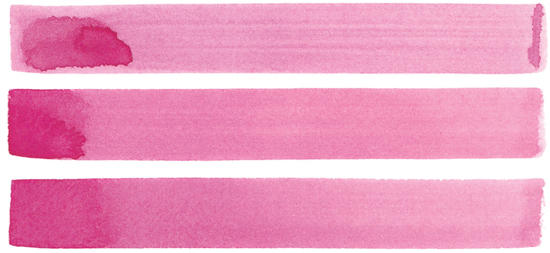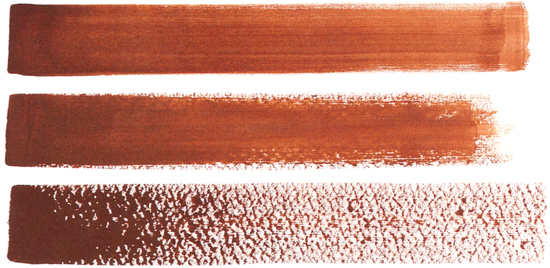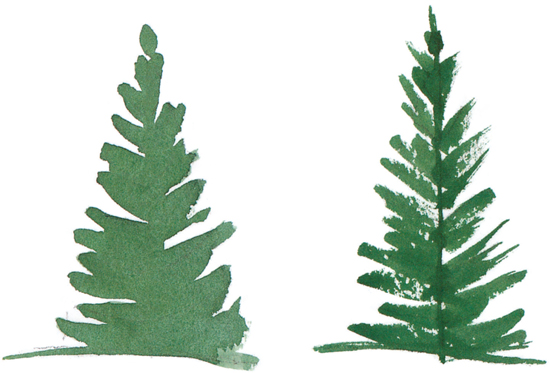
Wet-into-wet, wet-on-dry and dry-brush techniques are synonymous with watercolor. Often, all three are used in one painting.
To paint wet-on-dry, apply a wet brush loaded with paint to dry paper. Because there is no water on the paper to help the paint disperse, wet-on-dry produces defined strokes with hard edges. Different papers react similarly to the wet-on-dry technique. However, the smooth surface of hot-pressed paper allows cleaner edges.
The dry-brush technique uses dry paper and a dry brush loaded with a mixture that has very little water. Hot-pressed paper lets very little texture show through after you’ve painted over it. Rough paper shows plenty of texture. If you want to use wet-on-dry or dry-brush techniques, make sure the area is completely dry before painting.

Examples of this technique used on different papers appear above: hot-pressed (top), cold-pressed (middle) and rough (bottom).

Examples of this technique used on different papers appear above: hot-pressed (top), cold-pressed (middle) and rough (bottom).

Mix the paint with just enough water to allow the mixture to transfer from the brush to the dry paper. The tree on the far left shows too much water used.